Planning to visit the stunning Como or Bellagio? Well, then keep reading the ULTIMATE guide of the best things to do in Lake Como, featuring hikes, boat tours, and more!
Would you like to know more about another big Italian lake? Here’s our guide to Lake Garda and here you can find our guide to Lake Maggiore!
If you live in Milan, Lake Como is more than likely one of your favourite playgrounds. Just hop on the train for one hour to find yourself on the shore of a stunning lake, with mountains all around, and cute lakeside borghi (villages) with cobbled streets and scenic piazzas.
We’ve visited countless times over the years, and slowly checked out most of the towns and villages on Lake Como – from Como itself to scenic Bellagio, pretty Varenna, underrated Bellano, and Cernobbio, where we recently competed in a triathlon race. Plus many more, of course.
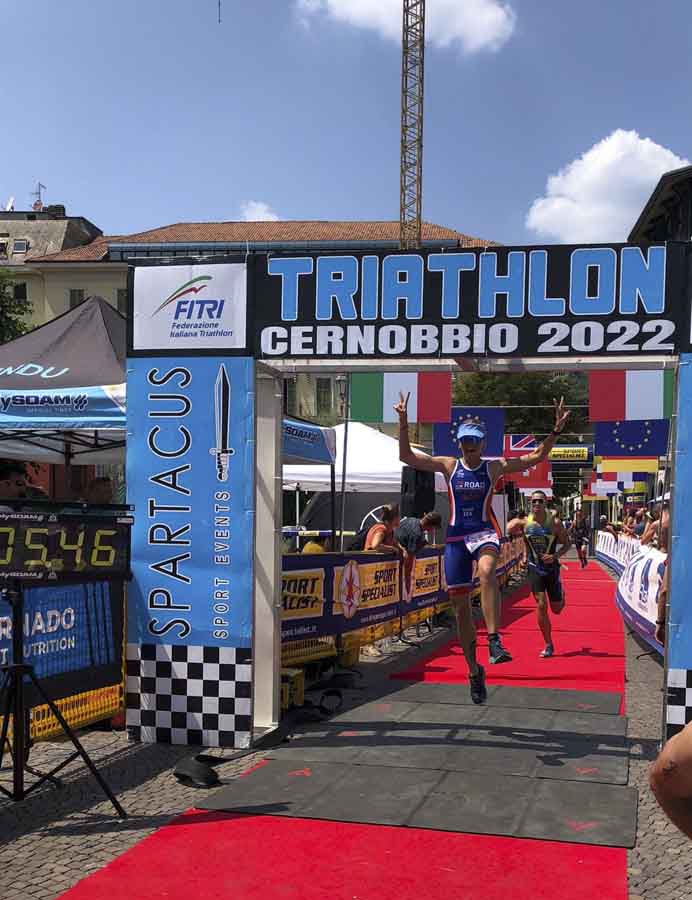
Sounds confusing? That’s where we’re coming to the rescue with this guide of things to do in Lake Como, including all the best towns and villages from south to north.
Meanwhile, here’s how to get to Lake Como from Milan, and here is our 1-day in Lake Como itinerary!
If you have extra time to spend exploring the lake, follow our 3 days in Lake Como itinerary!
Things to do in Lake Como – Practical Info
Whether you are visiting Lake Como for a day trip or a weekend, your first choice would be choosing where to go. The lake is pretty big, measuring almost 50 km from top to bottom – it takes over an hour to make your way from Como to Colico, on the northern tip.
Lake Como is shaped like an inverted Y, with two distinct branches in the south. Como and Lecco, the two largest cities, are located on the southern tip of the two branches, divided by a mountainous area known as Triangolo Lariano. The Lecco branch is sometimes referred to as ‘Lago di Lecco’ (Lake Lecco), but it’s not a separate lake!
You may also hear the term Lario or adjectives like lariano in reference to the lake, after its Latin name Larius Lacus.

Como and Lecco are both easy to reach by train from Milan. The Tirano rail line runs along the Lecco (eastern) side of the lake, stopping at Varenna, Bellano, and Colico stations.
To visit the Como side of the lake, you can use ferries – they run about once an hour along the Como-Colico (and vice versa) routes, stopping at all towns and villages along the way. Make sure you choose rapid ferries, as the slow ones really do take a long time. You can just buy tickets on the day at booths along the lake, there’s no need to pre-book except during high season, when you can just buy the tickets you need first thing in the morning for the ferries you’ll take throughout the day.
There is also a triangular ferry route connecting Menaggio, Bellagio and Varenna, the three towns at the centre of the lake, with frequent departures especially in summer (2/3 times an hour).
For an easy Lake Como day trip from Milan, you could take the train to Varenna, then a ferry to Bellagio where you can have lunch, and then an hour-long ferry to Como, and perhaps visit Brunate for sunset.
Southern Lake Como – Como Branch
1) Como
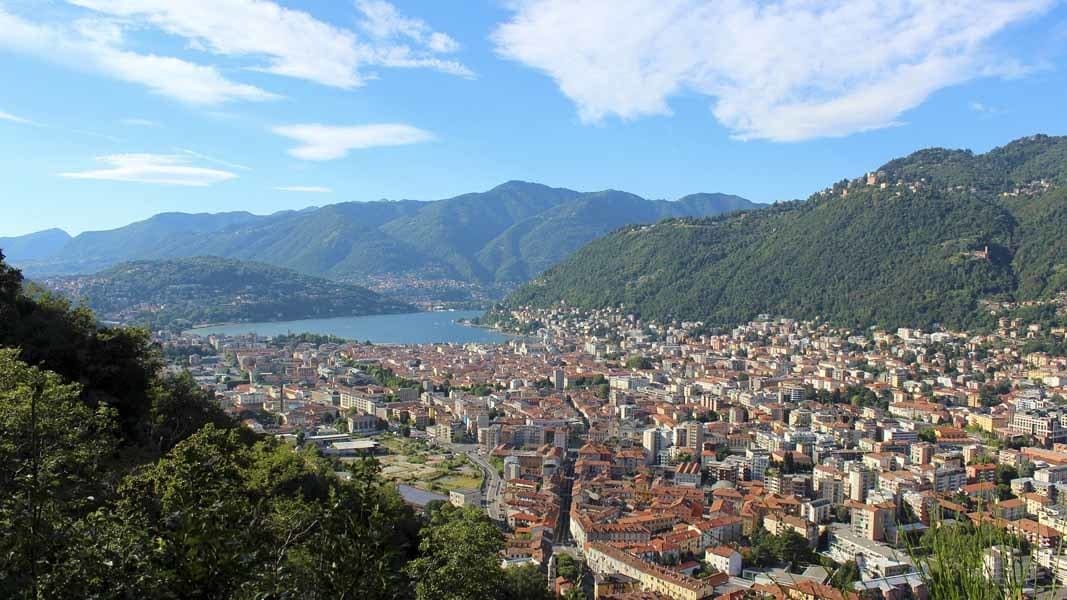
The city that gave the name to the world-famous lake, Como is a magical city, perfect for a leisurely stroll among the historical center which offers spectacular views of the lake. The most beautiful viewpoint is probably the Larian ‘balcony’, which can be reached via the Como – Brunate railway. Como, however, has also a lot to offer on a cultural and architectural level, starting with the city’s Duomo, considered one of the most beautiful monuments in northern Italy.
The Cathedral of Como features the union of Gothic and Renaissance styles, which can be easily seen on the façade. Inside the Cathedral you can admire the works of Bernardino Ludini and Gaudenzio Ferrari. The Church of Sant’Abbondio is another important historical building in the city, a perfect example of Lombard architecture.
In the city center, don’t miss the town hall, known as the Broletto, built during the 13th century and still standing tall. Science enthusiasts should visit the Tempio Voltiano, a museum dedicated to the famous inventor Alessandro Volta, who was himself a native of Como. In the museum, you can admire the various scientific instruments used by Volta, including some original tools and reproductions.
During your visit, if you want to try some great local dishes, the best restaurants are Natta Bistrot and Elsa’s Kitchen. The latter is particularly famous for its seafood specialties, and it is located on one of the town’s busiest streets.
-Getting to Como from Milan: There are frequent trains connecting Milan and Como, taking between half an hour (Swiss EC trains) to one hour (regional trains). The Como San Giovanni station (trains from Milano Centrale and Milano Porta Garibaldi) is convenient for the historic centre, the Como Lago station (trains from Milan Cadorna) is right next to the lake.
2) Brunate
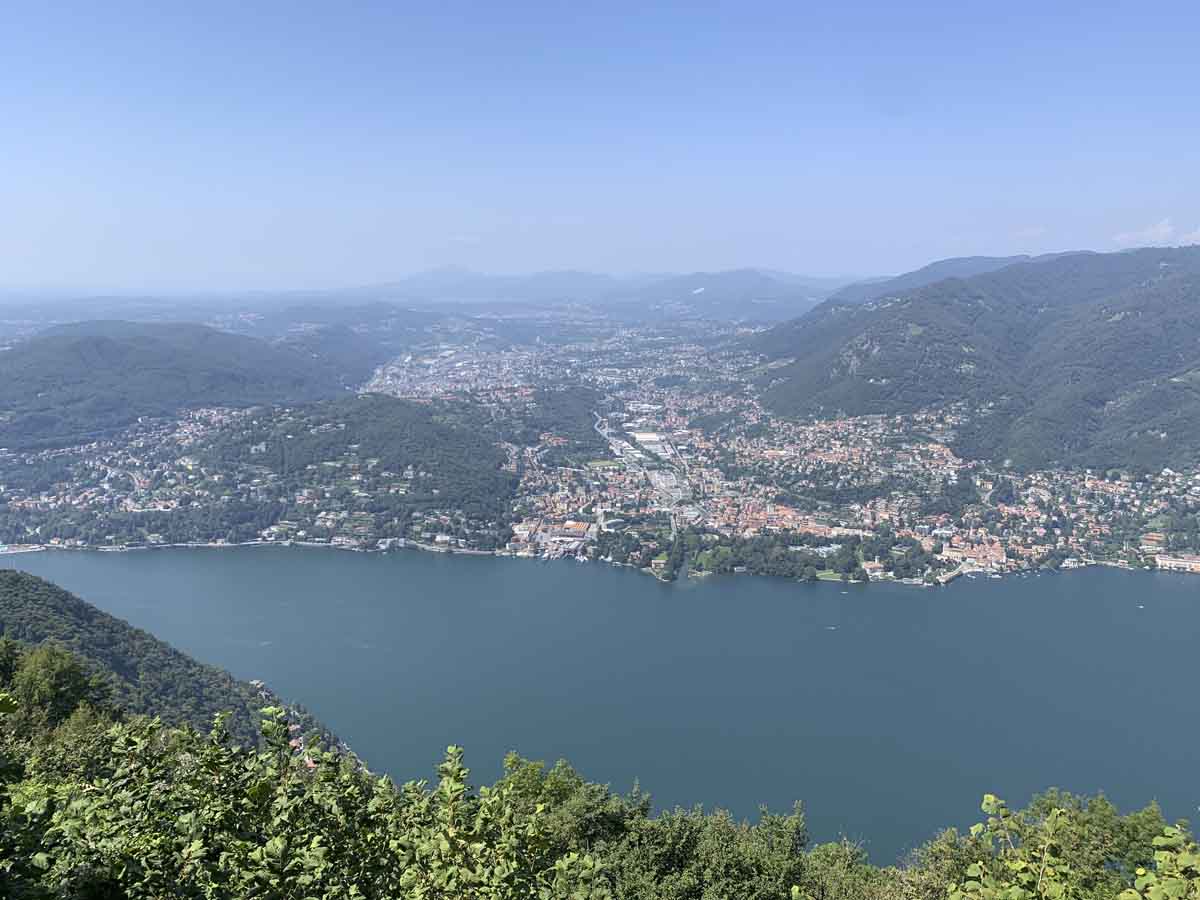
From Como it is possible to take a funicular to Brunate, a town located in the Alps at 715 meters above sea level – definitely one of the top unmissable things to do in Lake Como!
The Brunate center is quite small in comparison with other towns on the lake, but it is pretty charming, filled with elegant buildings. Of course, the elevated position offers a lot of wonderful views of the entire valley and of the lake.
The Voltiano Lighthouse (named after Alessandro Volta) is probably the ideal spot to take in the landscape. Shrouded in nature, the lighthouse watches over Lake Como, creating a unique and evocative atmosphere. Located on Monte Trecroci, the lighthouse illuminates the lake with the colours of the Italian flag every night.
Trekking lovers can reach the lighthouse from the funicular station via a 2 km long path, taking about half an hour. You can also hike to Brunate from Como, taking about one hour and a half with stops along the way. Among the historical buildings of Brunate, the Church of Sant’Andrea Apostolo stands out, especially for its spectacular pipe organ.
To try local dishes in a typical trattoria, I recommended the restaurant Polentiera, which combines traditional cuisine with seasonal products.
-Getting to Brunate from Como: The funicular runs every half an hour from early morning to late evening. However, it is quite small and popular at weekends and in summer, so please allow extra time to get up and down as it fills very quickly so you might have to wait for the next one.
3) Cernobbio
Cernobbio is one of the most beautiful towns on Lake Como. A fishing village turned into a world-famous location, Cernobbio is famous for its luxurious and exclusive villas and a city centre overlooking Lake Como.
The town center features many 19th-century style buildings, and a delightful small harbor perfect to relax and admire the lake.
While in Cernobbio, be sure to stop by Villa Pizzo. Located on a rocky promontory, the villa was built in the 16th century, while the exteriors and the beautiful garden were created later, in the 19th century.
Also, during the 19th century, the Villa was purchased by a New York noblewoman, proving that Lake Como’s fame was largely known even in the past.
If you want to combine the wonderful sight of the lake with some great food, you can stop and have a bite at the Osteria del Beuc.
-Getting to Cernobbio from Como: Cernobbio is right next to Como, you can walk there in about 30 minutes along the lakeside. Alternatively, northbound lake ferries stop in Cernobbio, travel time 15 mins.
Southern Lake Como – Lecco Branch
4) Lecco
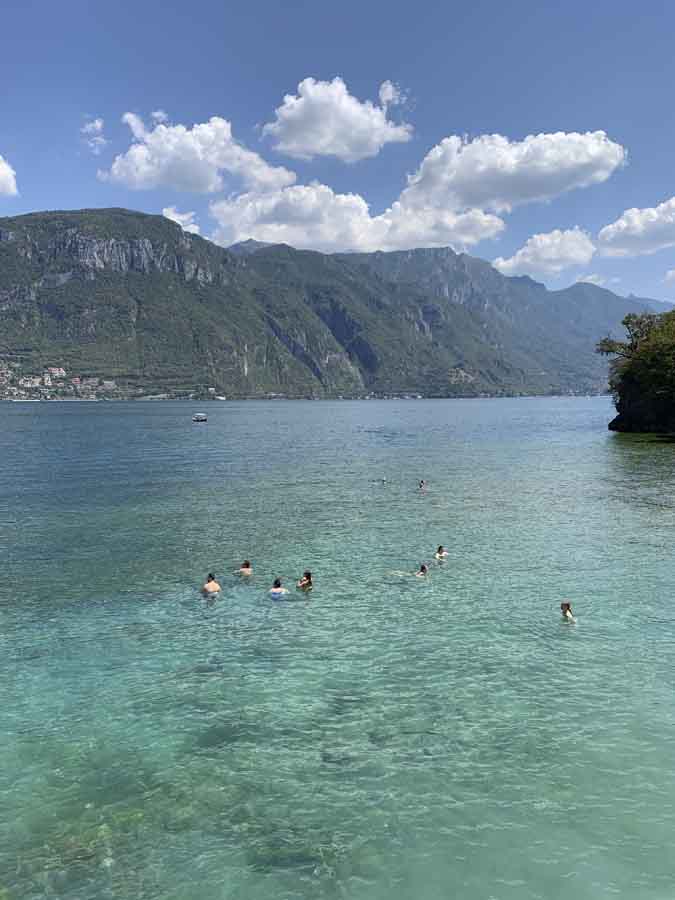
The city where writer Alessandro Manzoni set the famous novel I Promessi Sposi (The Betrothed), Lecco is a magical place that offers visitors splendid views of Lake Como and a city center filled with beautiful buildings.
A walk along the city’s Lungolago is the perfect way to admire the lake and the Alps, as well as to take beautiful pictures at sunset. From the Lungolago, it is possible to reach the 96 meters tall bell tower of San Nicolò, that watches over the city and from which you can enjoy a truly spectacular view.
Lecco is also a city of culture: Palazzo Belgioioso hosts the Museum of Natural Sciences, the Archeological, Museum, the Historical Museum, and even a planetarium. For a trip to the past, don’t miss Pescarenico, an ancient fishing village connected to Lecco by Ponte Azzone, the first bridge built in the city. Lecco offers a wide choice of restaurants, specialized in local cuisine. To try some typical lake fish dishes, the best place is the Azzeccagarbugli restaurant, named after a character of the novel The Betrothed.
-Getting to Lecco from Milan: There are hourly trains between Milano Centrale and Lecco, travel time is 40 minutes.
5) Sentiero del Viandante
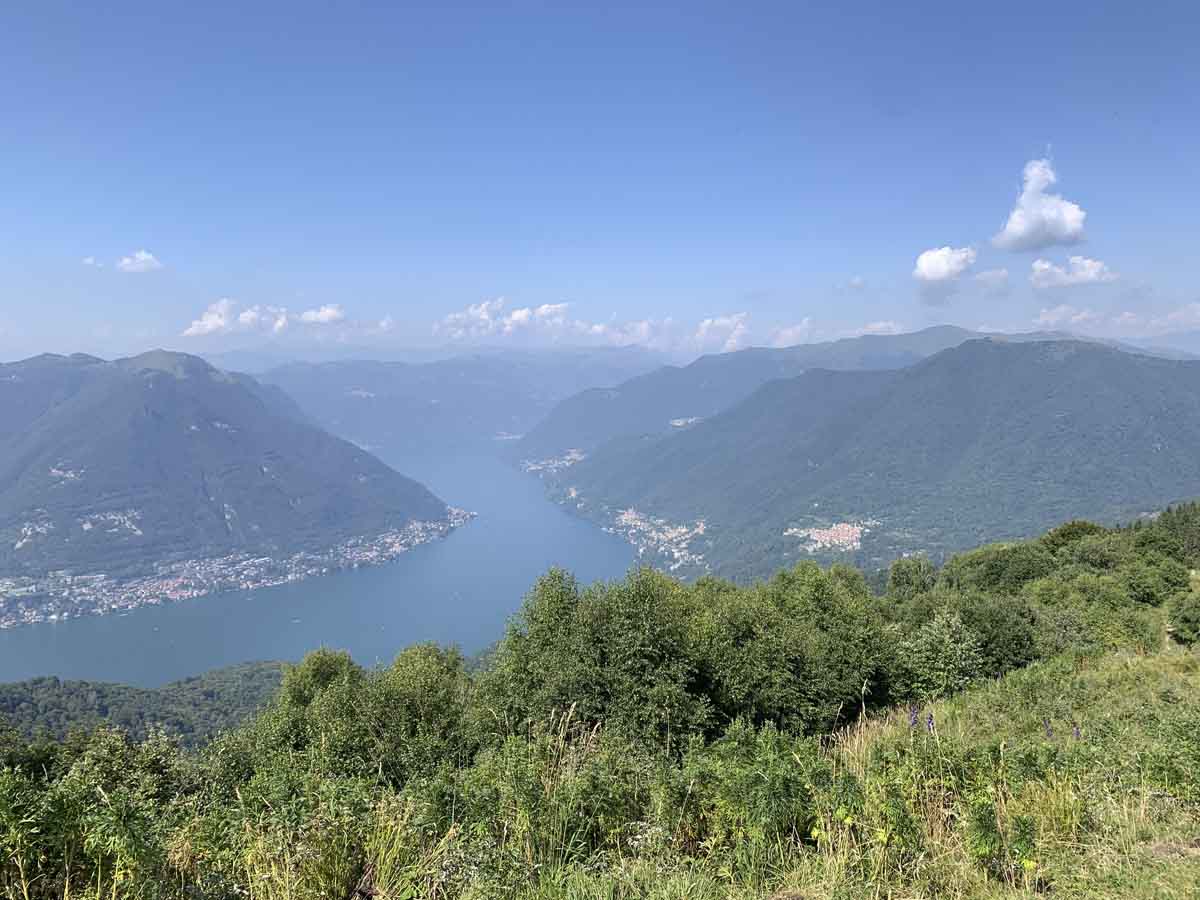
In a place like Lake Como, there are really plenty of opportunities for trekking lovers in search of scenic routes. One of the most famous is the Sentiero del Viandante (Wayfarer’s Path), which is divided between the eastern shore of the lake and the mountains.
The trail is 45 kilometers long, and it can be tackled in 3 or 4 days. The first leg starts from Abbadia Lariana and ends in Lierna, while the second leg goes from Lierna to Varenna. Both legs of the path are well known for the spectacular view of Lake Como, in fact it is nice to walk slowly and also take some stops to enjoy the sights.
The third leg, from Varenna to Dervio, will take you to a typical fishing village on Lake Como and then to some mountain villages, where it is possible to get a sense of life on the lake before it became a tourist destination. The last leg, from Dervio to Colico, will take you all the way to the northern tip of Lake Como.
-Getting there from Milan or Lecco: There are trains running between all the various towns where stages begin and end, so you decide which leg you want to tackle, or perhaps plan your trekking by dividing it into various days. It’s definitely one of the best Lake Como hikes and things to do around the lake!
6) Bellano & Nesso
Ancient villages, unforgettable views, spectacular trails, and stunning villas are the main things to do in Lake Como. Nesso and Bellano are two villages that are a little less popular than the others described in this guide, but still worth visiting for their “orridi.”
The name in Italian is not the most reassuring, since the Italian term “orrido” means horrible. Actually, in geographical terms, an “orrido” is a deep rocky gorge near rivers and lakes, usually formed by streams. In fact, the Nesso gorge is formed by the Tuf and Nosè streams, which form a small waterfall that flows into Lake Como. You can admire the rocky canyon from the town center, from which the waterfall overlooks an old bridge.
The Bellano gorge is even more impressive: it is a natural cave with a system of footbridges overlooking the waterfall. Going deeper inside the cave, it is possible to hear the sound of the waterfall flowing into the lake, through a rock canyon. Cà del Diavol (The house of the devil), a building at the mouth of the gorge, adds an aura of esoterism and mysticism to the place, as it was the setting of satanic rites and other tales.
Central Lake Como
7) Bellagio
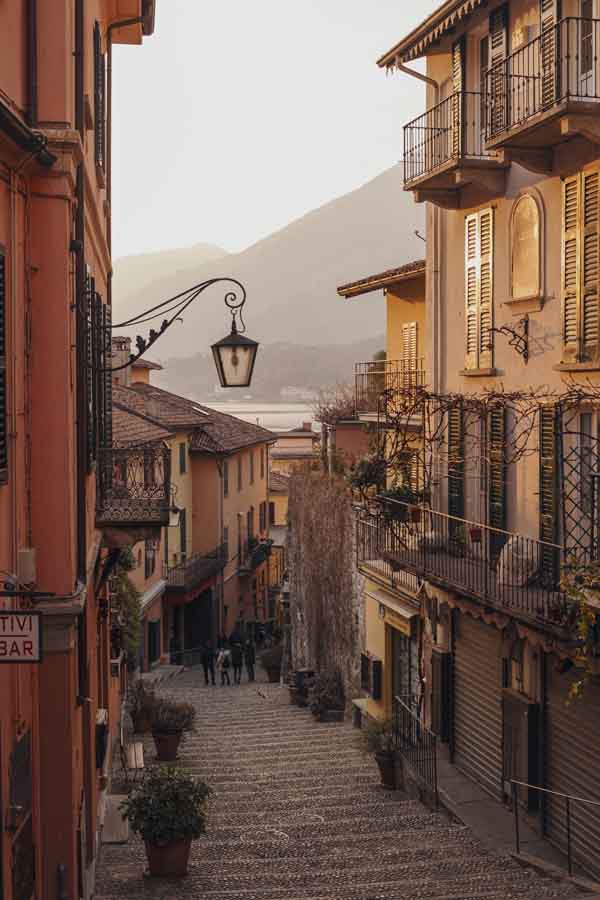
Lake Como is famous for the small towns surrounding it, and Bellagio is surely one of the most beautiful. The great location at the base of the Triangolo Lariano, where the two branches of Lake Como meet, partly made the fortune of this town. Here’s our guide to the best things to do in Bellagio!
Its fame also derives from the elegant villas and gardens. The village of Bellagio has been a renowned tourist destination since the early 19th century, and visiting it is still one of the best things to do in Lake Como. In summer, Bellagio is extremely busy, so perhaps opt to visit another Lake Como village like Varenna or Bellano, especially if you’re planning to visit during the weekend.
The Salita Serbelloni is probably the village’s most famous street, characterized by small stores and boutiques. The park of Villa Serbelloni, located on the peninsula at the centre of the lake, is a great place to take a walk and admire the Como and Lecco branches of the lake. Inside the park, you will find Villa Serbelloni, but unfortunately, it is closed to public.
This village is a popular destination for cyclists, being one of the access points to the famous climbs in the Triangolo Lariano. the most iconic of them all is Ghisallo, 9.4 km with 600 m elevation, ending at the famous Madonna del Ghisallo Church, patron saint of cyclists. True scalatori (climbers) can also attempt the famous Muro di Sormano, one of the hardest climbs in the world.
Bellagio is also the perfect place to try some typical food, even though many restaurants are very touristy. Book a table at Trattoria San Giacomo da Gancio, for some great fish and meat-based dishes.
-Getting there from Milan: Take a train to Varenna and then hop on a lake ferry, departures are frequent but there are long queues in summer.
-Getting there from Como: There are ferries from Como, but make sure you opt for a ‘rapido’ taking about an hour – otherwise, travel time is about 3 hours.
8) Varenna

Varenna shares the splendid view of Lake Como with the other towns on the shore, but it has a charm on its own, thanks to its colourful houses overlooking the lake, creating a magical atmosphere.
One of the most visited places in Varenna is the Passeggiata degli Innamorati, a pedestrian path that connects the boat dock with the historical center. You will walk on a footbridge suspended over the lake, a perfect place for taking pictures. Another nice place is Villa Monastero, with spectacular gardens overlooking the lake.
The old town is nice, with charming alleys and narrow streets going uphill. Don’t miss the opportunity to stop at one of the various restaurants such as Cavatappi or Al Prato, and to try Lombard specialties such as Pizzoccheri or Missoltini, which is the typical dish of Lake Como made with freshwater fish only found in the lake.
Check our 12 Best Things to do in Varenna guide for more info!
-Getting there from Milan: There are hourly trains from Milan, travel time is 50 minutes.
9) Menaggio
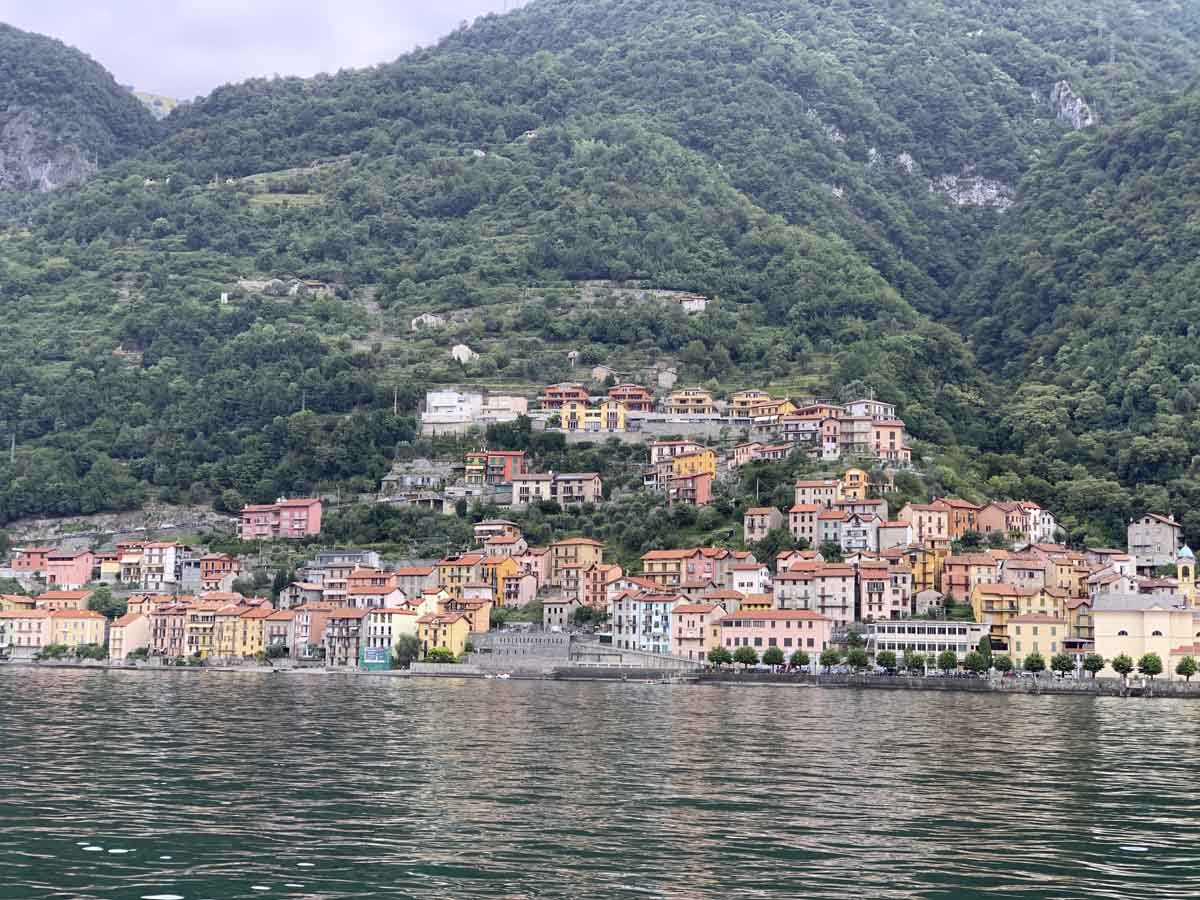
On the western coast of Lake Como, the small town of Menaggio is particularly popular among sporty tourists. In fact, Menaggio is home to the prestigious Cadenabbia Golf Club and has several trails dedicated to MTB and trekking.
On the other hand, those who rather relax will find the beach of Lido di Menaggio a perfect spot to lie down and enjoy the lake. In addition to sports and relaxation, it is worth taking a stroll through the small town, on narrow streets filled with stores and excellent restaurants like La Grolla, where you can taste local specialties,
Menaggio also has some stunning 19th-century villas, including Villa Mylius Vigoni and Villa Garovaglio Ricci. The former has been turned into a house museum by the owner, where you admire various paintings, statues, and even antique furniture.
-Getting there from Como: The Colico-bound ferry stops in Menaggio (50 mins travel time), or else you can easily reach Bellagio and Varenna directly from Menaggio (20 mins).
10) Lenno

One of the most visited villages on the western shore of Lake Como, Lenno is known worldwide for the magnificent Villa del Balbianello.
This elegant architectural complex, dating back to the late 18th century, sits on an elevated garden that overlooks the shore of Lake Como. The villa’s exterior features a majestic garden, divided into small paths housing plane trees, holm oaks, and magnolias. Due to its beauty, the garden is the most visited part of the Villa, although it is also worth taking a tour of the buildings, especially La Sala dei Primitivi and the Museo delle Spedizioni.
La Sala dei Primitivi hosts a number of African and pre-Columbian artifacts, while the Museo delle Spedizioni has a collection of various objects belonging to different cultures and peoples. It’s all thanks to the last owner of the Villa, Count Guido Monzino, an adventurer who tackled several expeditions and also reached the North Pole.
Villa del Balbianello is also an interesting place to visit for movie fans. In fact, the Villa was used as a location for several movies over the years, including episodes from the famous sagas of Star Wars and 007.
Getting there from Como: The Colico-bound ferry stops in Lenno (30 mins).
11) Tremezzo
Tremezzo is located halfway between Switzerland and the Po Valley; so it is no coincidence that its name can be translated as Terra di Mezzo (Middle Earth), even if you won’t find any hobbit living there! The town center is a calm and relaxed place, surrounded by the typical landscapes of Lake Como, which are always beautiful to see.
What makes Tremezzo a recommended destination is the Villa Carlotta. Located on the lakeshore, Villa Carlotta dates back to the late 17th century, and during the years it was modified by the different owners who inhabited it.
The building has three floors, where you can admire a collection of great art, including masterpieces by the famous Italian sculptor Antonio Canova. Antique furnishings and ceilings decorated in 18th-century style adorn the Villa’s upper rooms. In the exterior of the Villa there is a stunning park that blends perfectly into the surrounding landscape.
Getting there from Como: The northbound lake ferry stops in Tremezzo (45 mins).
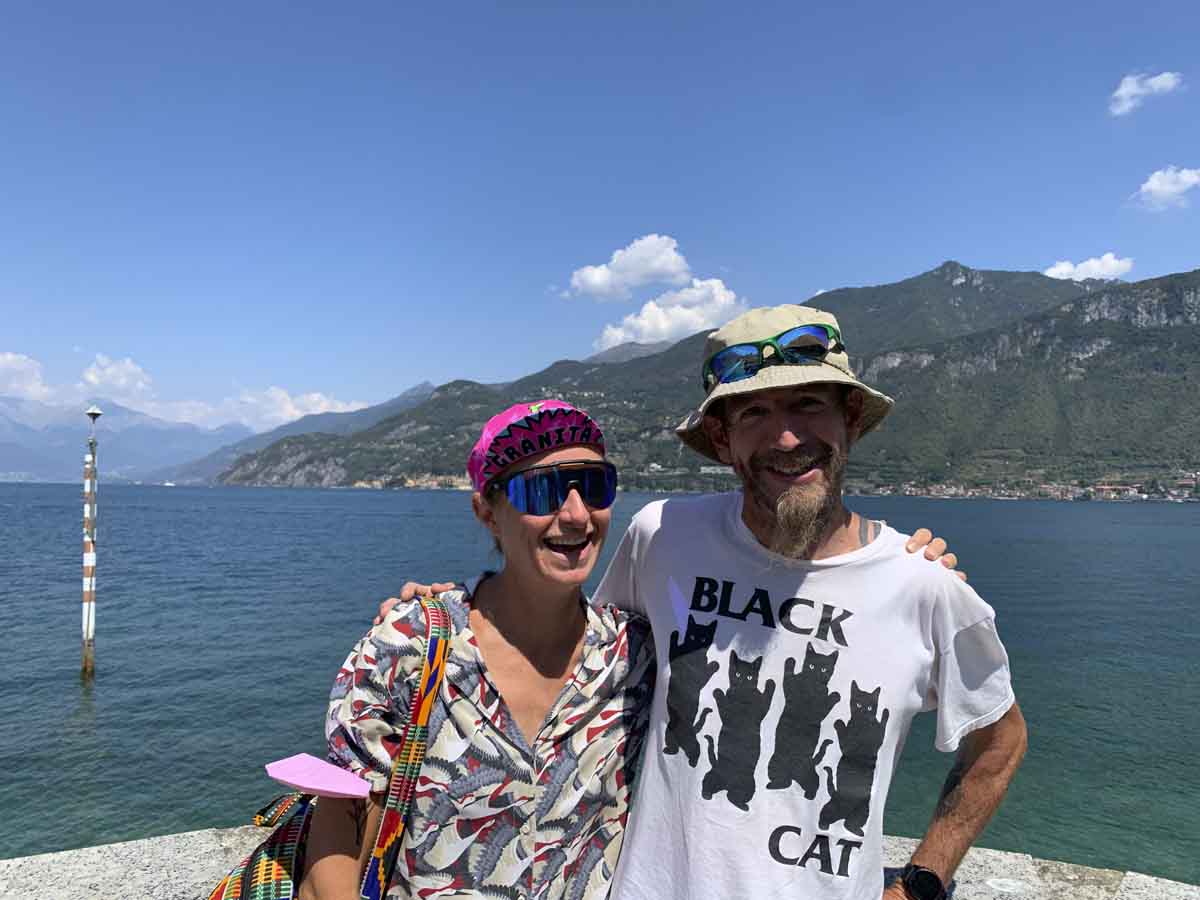
Northern Lake Como
12) Colico
Colico is the crossroad connecting Lake Como with Milan and Trentino-Alto Adige, and to Central Europe. Not surprisingly, in the past, the town of Colico was used by the Spanish Count of Fuentes as a strategic outpost. The ruins of the Fuentes Fort on Monteggiolo hill are surrounded by nature, creating a suggestive landscape that is worth seeing. Fort Montecchio Nord is another military outpost, built during World War I and still one of the best-preserved forts in all of Europe, with fully functional cannons.
Colico is also located at the start of Valtellina, one of Lombardia’s best-known valleys created by the Adda river as it flows down the Alps and into Lake Como. Sentiero Valtellina is a cycle path running all through the valley, from Colico to Bormio, the starting point of the famous cycle tour to Stelvio Pass, one of the most spectacular in Europe.
Getting back to nature, if you pass through Colico, be sure not to miss the beautiful Pian di Spagna nature reserve, an unspoiled place full of typical flora and fauna. After a nice walk in the reserve, you may want to sit down at a nice local restaurant to try typical dishes. If that is the case, Ristorante Perbacco offers lake fish and grilled meat dishes, as well as local dishes such as Manfrigole alla grosina.
-Getting there from Milan: There are hourly trains from Milan, travel time is 1 hour and a half. Alternatively you can go the scenic way and take the lake ferry all the way from Como, crossing the length of the lake – it will take 2 and a half hour but it’s a really scenic trip!
Looking for more posts about Lake Como? There you are!
